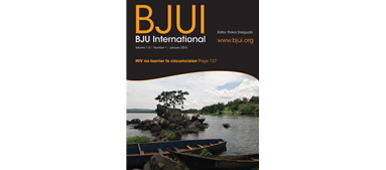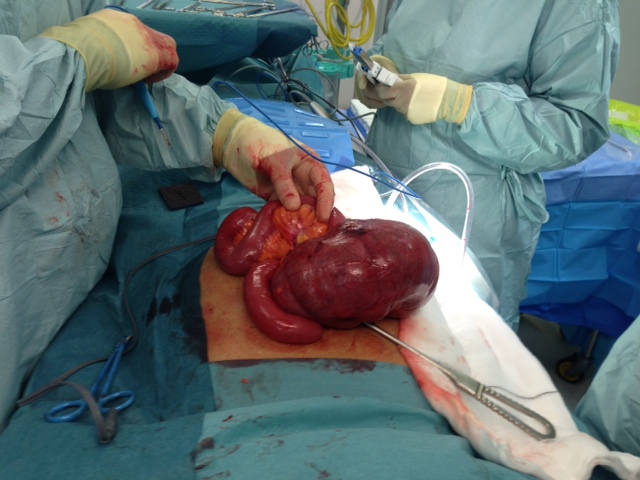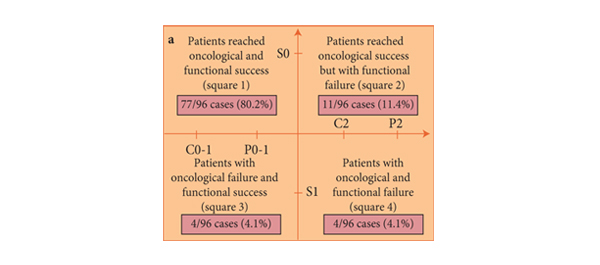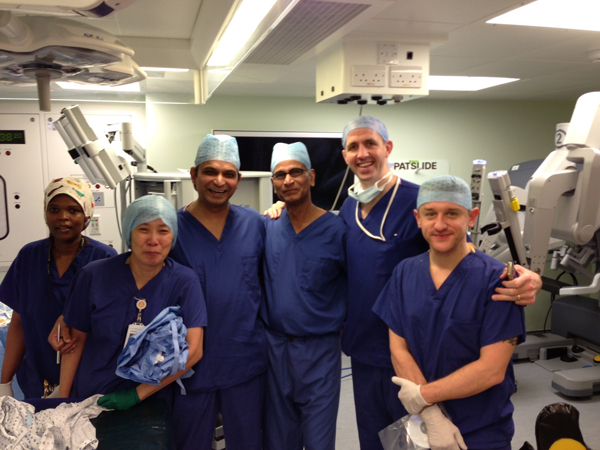Article of the week: Obese patients should not be denied RARP
Every week the Editor-in-Chief selects the Article of the Week from the current issue of BJUI. The abstract is reproduced below and you can click on the button to read the full article, which is freely available to all readers for at least 30 days from the time of this post.
In addition to the article itself, there is an accompanying editorial written by a prominent member of the urological community. This blog is intended to provoke comment and discussion and we invite you to use the comment tools at the bottom of each post to join the conversation.
If you only have time to read one article this week, it should be this one.
Perioperative and early oncological outcomes after robot-assisted radical prostatectomy (RARP) in morbidly obese patients: a propensity score-matched study
Haidar Abdul-Muhsin, Camilo Giedelman, Srinivas Samavedi, Oscar Schatloff, Rafael Coelho, Bernardo Rocco, Kenneth Palmer, George Ebra and Vipul Patel
Global Robotics Institute, Florida Hospital Celebration Health, Celebration, FL, USA
OBJECTIVE
• To evaluate the perioperative and pathological outcomes associated with robot-assisted radical prostatectomy (RARP) in morbidly obese men.
PATIENTS AND METHODS
• Between January 2008 and March 2012, 3041 patients underwent RARP at our institution by a single surgeon (V.P.).
• In all, 44 patients were considered morbidly obese with a body mass index (BMI) of ≥40 kg/m2.
• A propensity score-matched analysis was conducted using multivariable analysis to identify comparable groups of patients with a BMI of ≥40 and <40 kg/m2.
• Perioperative, pathological outcomes and complications were compared between the two matched groups.
RESULTS
• There was no significant difference in operative time. However, the mean estimated blood loss was higher in morbidly obese patients, at a mean (sd) of 113 (41) vs 130 (27) mL (P = 0.049).
• Anastomosis was more difficult in morbidly obese patients (P = 0.001).
• There were no significant differences in laterality, ease of nerve sparing, or transfusion rate between the groups.
• There were no intraoperative complications in either group. Postoperative pathological outcomes were similar between the groups.
• Differences in positive surgical margins and ease of nerve sparing approached statistical significance (P = 0.097, P = 0.075 respectively). Postoperative complication rates, pain scores, length of stay and indwelling catheter duration were similar in the groups.
CONCLUSIONS
• RARP in morbidly obese patients is technically demanding. However, it can be accomplished with acceptable morbidity and resource use.
• In the hands of an experienced surgeon, it is a safe procedure and offers beneficial clinical outcomes.
Read Previous Articles of the Week








